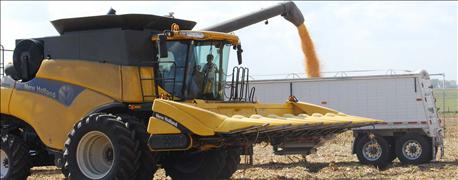
About 20 years of University of Nebraska research shows that cornstalk grazing can actually increase soybean yields the following year, and has little or no impact on corn crops. While there is still resistance to grazing cornstalks by some landowners because of the potential for compaction from cattle or loss of organic matter, research doesn't back up the myth.
"A long-term study at Mead, Neb., showed slight improvements of 2 to 3 bushels per acre in soybean production following grazing of corn residue when managed in a corn-soybean rotation," says Nebraska Extension beef systems specialist Mary Drewnoski. "This result was the same regardless of whether cattle were grazed in the fall or the spring."
In another UNL study at Brule, Neb., corn yields were measured over a five-year period after cows were grazed during the fall in a field that was maintained in a continuous corn system. "No effect on subsequent corn yields was observed," Drewnoski says. "Additionally, four other sites in the eastern half of Nebraska that were managed in continuous corn have been tested for the last two years, with each of these sites showing similar results with yields not being different for grazed and non-grazed cornstalks."
Drewnoski maintains that grazing cornstalks is a win-win situation for crop and cattle producers. "Crop producers can get extra income without negatively affecting subsequent crop yields and in some cases, improving crop yields," she explains.
"Some farmers are concerned that grazing will result in removal in nutrients or loss in organic matter," Drewnoski adds. "However, after long-term grazing of 18 years, soil organic matter, nitrogen, phosphorus or potassium was not different from non-grazed areas, suggesting there is no loss in nutrients due to grazing."
You can learn more about cornstalk grazing by contacting Drewnoski at 402-472-6289 or go online to beef.unl.edu/cropland.

About the Author(s)
You May Also Like






